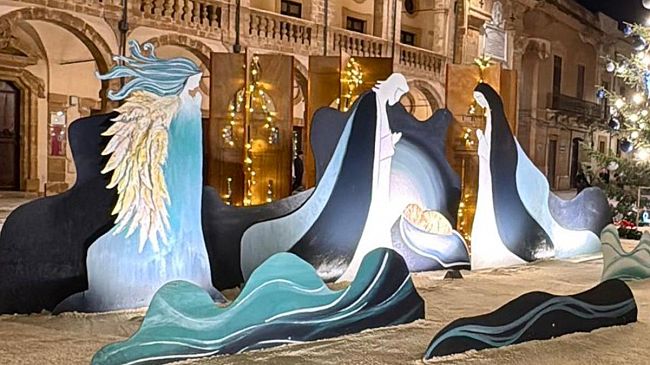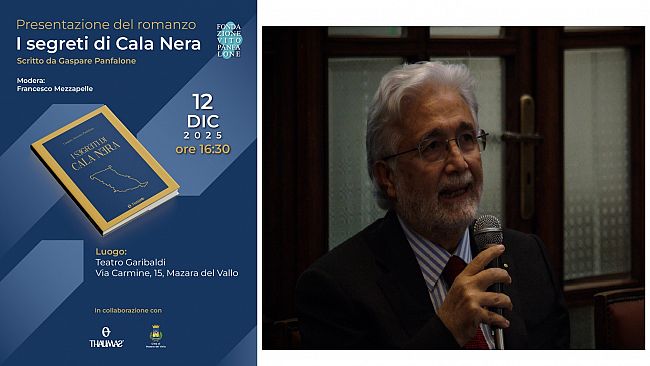Giovanni Scotti del giornale online di turismo e cultura del viaggiare mondointasca.org e Philip Willan del sito www.italiainsider.it
Borghi Marinari: offerta innovativa dalla SiciliaIl progetto del distretto turistico tematico Borghi Marinari è decollato in Sicilia. Hanno aderito undici comuni dislocati in sei province. Obiettivo valorizzare le bellezze del territorio, il turismo balneare, enogastronomico e culturale
I sei comuni della costa sud in dettaglio
Lungo la costa sud, percorrendo la regione da ovest verso est incontriamo le altre sei località che hanno già aderito al progetto. Presentiamo in dettaglio le specifiche peculiarità di ogni Borgo Marinaro, cominciando da Mazara del Vallo per finire a Aci Castello.
Mazara del Vallo. Vero e proprio crocevia di popoli e dominazioni, oggi secondo porto peschereccio più importante d’Europa, Mazara del Vallo rappresenta un polo multietnico in cui genti e culture diverse hanno saputo trovare la via della pacifica convivenza nel corso dei millenni, mantenendo la cultura e le tradizioni, anche con manifestazioni tipiche del proprio Paese di origine.
La Kashba, antico quartiere arabo nel cuore di Mazara, conserva ancora oggi elementi distintivi della cultura arabo-barbara: vicoli, strade piccole e tortuose, cortili, pozzi per l’acqua, lavatoi, che si dipartono da un asse centrale e portano a numerosi cortili, dove si aprono gli accessi alle abitazioni.
In ogni vicolo della Kashba, ristrutturata e risanata nell’arredo urbano e fognario e così valorizzata, si può rivivere la storia antica, raffigurata o scritta su pannelli in ceramica. Piazza Mokarta, che deve il suo nome ad un generale arabo, ad esempio, ospita l’Arco Normanno, l’opera “Gente che viene dal mare”, realizzata nel 1964 dallo scultore e scrittore mazarese Pietro Consagra, il simbolo delle contaminazioni culturali, la Cattedrale del Santissimo Salvatore di epoca normanna, sorta al posto di una precedente moschea.
Piazza della Repubblica, di stile ed aspetto barocco, la piazza più importante di Mazara, ospita il Seminario dei Chierici, composto da un elegante porticato risale al 1710, la Cattedrale del S. Salvatore dotata di un imponente campanile barocco, il Palazzo Vescovile, edificio risalente al 1596 e modificato nel corso del settecento, ed infine un’opera del periodo settecentesco, la statua del Santo Patrono (San Vito), collocata al centro della piazza ed eseguita da Ignazio Marabitti.
Nell’omonimo museo in piazza Plebiscito si può ammirare la statua bronzea del Satiro Danzante.
Fonte testo e prime due foto: PARTE DI ARTICOLO DI GIOVANNI SCOTTI
Sicily bids for bigger slice of Mediterranean tourism market.
MAZARO DEL VALLO --With chaos and violence scaring holidaymakers away from the southern shores of the Mediterranean, Sicily is bidding for a larger slice of the regional tourism market. Culture, cuisine and pristine beaches are what local officials are hoping will prove an unbeatable combination and help the island fulfill its natural vocation as a tourist destination.A dozen coastal towns have clubbed together to form the “Borghi Marinari” (Coastal Towns) “destination marketing organisation” to mount a joint promotional effort for their attractions.
Last month they invited around 30 journalists, half from the foreign press and half Italian travel writers, to sample the delights of some of the island’s most exotic offerings.The tour began in the fishing port of Mazara del Vallo, where mayor Nicola Cristaldi is president of the new promotional association. Financed by the Sicilian regional government, it intends to monitor and improve the quality of tourism services, offer travel packages including several of the 12 participating towns, and promote the area to Italian and international holidaymakers.
Giovanni Borsellino, the son of a murdered anti-mafia magistrate, is one of the Borghi Marinari’s eight-member board.Greeting the visiting journalists, Mr Cristaldi stressed Mazara’s potential role as a model of successful religious and ethnic integration, given the town’s history of ancient and modern migrations. Conquests by Arabs, Phoenicians and Normans have accustomed the town to cultural changes and Mr Cristaldi insisted that his fellow citizens recognised the value of cultural diversity, rather than seeking a homogenising integration of old and new.
For travellers nostalgic for the sights and sounds of North Africa, Mazara’s Kasbah could be the answer.Its narrow alleys and courtyards are home to recent generations of North African immigrants and are currently undergoing regeneration, with walls, stairs and pavements decorated with brightly coloured ceramics designed by international artists. Mazara is also home to the Dancing Satyr, a Greek statue caught in a fisherman’s net in 1988 after spending thousands of years at the bottom of the sea.
The ecstatic leaping figure has been compared to the work of Greek sculptor Praxiteles and has been displayed in Rome, Japan and at the Louvre in Paris since its fortuitous discovery on the seabed. Local officials are at pains to stress that the thousands of migrants from Africa and the Middle East that international media have recorded arriving in southern Italy are being absorbed by migrant accommodation centres in an orderly manner. One of the curiosities in the port of Portopalo di Capo Passero is a graveyard of migrant fishing boats drawn up on the shore.The rotting hulks, several destroyed by fire, with their names inscribed in Arabic script, bear testimony to the dangerous and cramped conditions in which desperate migrants take to sea for the dangerous crossing from North Africa to Europe.
“There have been no arrivals in Portopalo for the last two years,” said Dino Oliva, a local historian.“When they did come, they disembarked in the port and were immediately allocated to their initial destinations by local authorities and volunteers. This is an area with a very high level of volunteers for charitable work.” Mr Oliva said it was too early to say whether images of the African exodus were having a negative impact on Sicilian tourism or whether, in contrast, the island was benefitting from the security problems currently plaguing alternative destinations in places like Tunisia and Egypt.The nearby town of Sciacca illustrates the contrasting fortunes encountered by the island as it attempts to gear itself to compete in the modern world.
The hilltop town was founded by the Greeks in the fifth century BC as a thermal spa for the neighbouring town of Selinunte. But the health-giving sulphurous springs of Mount San Calogero, rather than drawing visitors, have been closed for over a year following the bankruptcy of the regional government-controlled company that operated the spa.The town’s mayor, Fabrizio Di Paola, said he had received an offer to revive the spa and take over the attached hotel from Rocco Forte, the Anglo-Italian hotelier.
He had been unable to respond because ownership of the complex was still tied up by the bankruptcy and red tape. One of the town’s jewels is the church of Santa Maria dell’Itria. Decorated in white and gold stucco and with curved iron grates sealing it off from what was once an enclosed convent, the church was declared too beautiful to hold weddings by Sciacca’s bishop.If marriages were allowed here, no one would wed in any of Sciacca’s other churches, the bishop argued.
Forte’s local business is flourishing however. Sicilians are hoping that Google will choose their island as the location for its team-building and brain-storming “Camp” for a third year running. For the last two years the celebrity get-together has been based in Sir Rocco’s luxury Ventura Golf Resort, which boasts two kilometres of Mediterranean coastline, four restaurants and six tennis courts. The event has been compared to the World Economic Forum in Davos and reportedly drew the likes of Elon Musk, the founder of Tesla Motors, Goldman Sachs’ Lloyd Blankfein, Bill Gates and Arianna Huffington.Google’s guests were treated to dinner in the Temple of Concordia in Agrigento’s spectacular Valley of the Temples on one evening and on another dined in the more intimate (relatively) modern setting of the town square of Borgo Bonsignore di Ribera.
Bordering on a nature reserve that backs onto kilometres of unspoilt sandy beach, the borgo is a fascist era town in microcosm, with church, school and town hall overlooking the quiet square where Google’s visitors were entertained.Tullio Urso, who runs a bed and breakfast in the town of Avola, is the president of a local merchant’s association and a strong believer in the Borghi Marinari initiative. Tourism has increased by 60 percent over the last five years, he said, with tourists drawn by the town’s well-kept beaches and local produce, which includes Nero d’Avola wine, almonds and biscuits.
Like Mr Oliva, he stressed that the migrant problem was under control. “People think they come ashore here and you will find them wandering around.They are in accommodation centres in the big cities. In Avola we have a couple of foster homes with around 20 African kids in them,” Mr Urso said. Avola was benefitting from the political crises in the southern Mediterranean and from Italy’s own economic crisis, which meant Italians were less likely to travel abroad and were keen to take advantage of lower prices out of season.
“We really believe in the Borghi Marinari project, although it’s just getting started,” Mr Urso said. Collaborative promotional efforts and internet were key to attracting visitors, many of whom were repeat customers after discovering the warmth of Sicilian hospitality. Mr Urso showed a photograph on his smartphone.An Italian customer had sent him a photograph of a remote beach and an update on its status for him to share the information over Whatsapp with his other clients.
Local administrators complain that Italy’s financial crisis has led to a drastic cut in state funds distributed from Rome, but some acknowledge that the austerity is forcing them to improve their governance.Sicily finds itself at an historic turning point, with an opportunity to establish itself as a tourist destination that combines the exoticism of Africa with millenia of European culture, dramatic unspoilt nature and modern services.Its modernisation project is just beginning, and the island needs to free itself from the dependency culture that hampered its development in the past.
Fonte testo e terza foto: ARTICOLO PHILIP WILLAN
Comunicato stampa
30/06/2016
{fshare}




